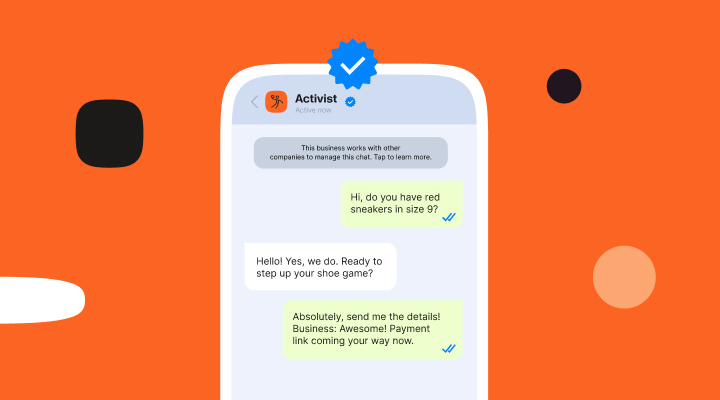Blog
Explore a wide range of topics, get inspired by the latest trends, and learn how to create conversational experiences that make an impact on your bottom line.

Posted onJanuary 15, 2026.
HubSpot x Infobip: Solving the engagement gap.
Discover how HubSpot and Infobip help brands close the customer engagement gap with omnichannel messaging, connected data, and AI-ready CRM.
Tags:- Blog.
- Spotlight.
- Conversational experience.
- RCS.
- Trends and Insights.

Posted onJanuary 14, 2026.
How network API capabilities strengthen security.
Telecom is becoming smarter, and network APIs are leading the way. Discover how these tools are transforming telecom security, enabling real-time verification, fraud prevention, and smarter services.
Tags:- Blog.
- Customer Security.
- Operators.
- Telco.
- Best Practices.

Posted onJanuary 12, 2026.
WhatsApp newsletter guide [Create & send WhatsApp newsletter].
A WhatsApp newsletter allows businesses to share updates, promotions, and important information directly within a familiar chat environment.
Tags:- Blog.
- Marketing.
- WhatsApp Business.
- Best Practices.

Posted onJanuary 12, 2026.
WhatsApp Business numbers & virtual numbers guide (2025).
Learn how to get, verify, and manage your WhatsApp Business number using the WhatsApp Business App or Platform. Explore types of numbers, setup steps, best practices, troubleshooting, and how Infobip helps scale your messaging.
Tags:- Blog.
- Conversational experience.
- WhatsApp Business.
- Best Practices.

Posted onJanuary 9, 2026.
UM: Turning every marketing campaign into a two-way conversation.
How full-service agency UM helps create meaningful conversations between brands and their customers, turning campaigns from something that’s seen into experiences that audiences actively engage with.
Tags:- Blog.
- Spotlight.
- Conversational experience.
- WhatsApp Business.
- Trends and Insights.

Posted onJanuary 8, 2026.
How Businesses Use WhatsApp API: Best Use Cases and Examples.
Many businesses today ask how to use WhatsApp for business. Customer communication has shifted. Email feels slow. Phone calls feel heavy. Messaging feels natural.
Tags:- Blog.
- Conversational experience.
- WhatsApp Business.
- Best Practices.
- Trends and Insights.

Posted onJanuary 7, 2026.
Key RCS statistics & market insights for 2026.
Discover the data that proves why RCS is becoming the most effective channel for modern customer engagement.
Tags:- RCS.
- Trends and Insights.

Posted onJanuary 6, 2026.
How to design and build a WhatsApp chatbot – with examples.
Thinking about incorporating a WhatsApp chatbot into your communication strategy? Here's everything you need to know to plan, design, and build a chatbot that helps you connect with your customers – without a line of code.
Tags:- Blog.
- Customer Service.
- WhatsApp Business.
- Best Practices.

Posted onJanuary 5, 2026.
What is ethical AI? Key principles, concerns, and ethical chatbots explained.
Explore ethical AI principles and best practices for creating fair, transparent, and privacy-respecting chatbots.
Tags:- Blog.
- Best Practices.

Posted onJanuary 5, 2026.
Ramadan marketing strategies: How to connect with customers in 2026.
Discover the latest consumer shopping habits in Ramadan and find out how conversational marketing can help you drive sales and thrive as a brand.
Tags:- Blog.
- Marketing.
- Trends and Insights.

Posted onDecember 31, 2025.
Qpon: Redefining local life services with digital communication.
Discover how Qpon has been leveraging channels such as WhatsApp and SMS to stay connected with its customers and provide a better experience.
Tags:- Spotlight.
- SMS.
- WhatsApp Business.
- Trends and Insights.

Posted onDecember 24, 2025.
Vero: Building digital connections across Brazil.
How a partnership based on technology, innovation, and proximity is driving new experiences for millions of customers, with WhatsApp at the center of their digital journey.
Tags:- Blog.
- Spotlight.
- WhatsApp Business.
- Trends and Insights.
Posted on{{date_formatted}}.
{{title}}.
{{excerpt}}
Tags:- {{term.name}}.








